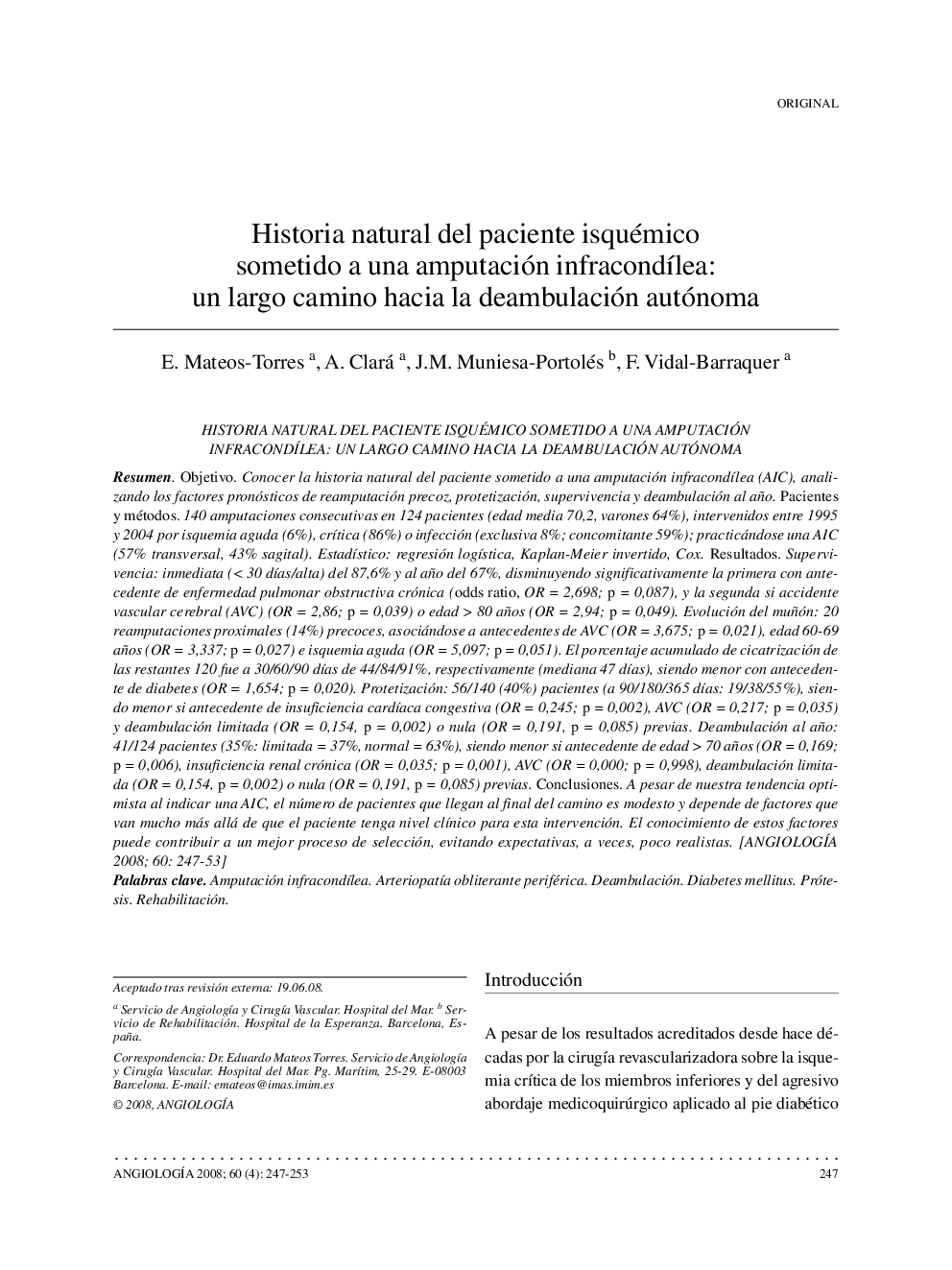| Article ID | Journal | Published Year | Pages | File Type |
|---|---|---|---|---|
| 2868193 | Angiología | 2008 | 7 Pages |
Abstract
Summary. Aim. To determine the natural history of patients who undergo below-knee amputation (BKA) by analysing the prognostic factors of early reamputation, prosthetics surgery, survival and walking at one year. Patients and methods. Our sample included 140 consecutive amputations in 124 patients (mean age 70.2; 64% males) who, between 1995 and 2004, underwent surgery involving BKA (57% transversal, 43% sagittal) as a result of acute ischaemia (6%), critical ischaemia (86%) or infection (exclusive 8%; concomitant 59%). Statistics: logistic regression, inverted Kaplan-Meier, Cox. Results. Survival: immediate (< 30 days/discharge) 87.6% and at one year 67%; the former dropped significantly with a history of chronic obstructive pulmonary disease (odds ratio, OR = 2.698; p = 0.087) while the latter decreased with cerebrovascular accident (CVA) (OR = 2.86; p = 0.039) or age > 80 years (OR = 2.94; p = 0.049). Progression of the residual limb: 20 early proximal reamputations (14%), which were associated with a history of CVA (OR = 3.675; p = 0.021), an age of 60-69 years (OR = 3.337; p = 0.027) and acute ischaemia (OR = 5.097; p = 0.051). The accumulated percentage of scarring in the other 120 was 44/84/91% at 30/60/90 days, respectively (mean 47 days), and was lower with a history of diabetes (OR = 1.654; p = 0.020). Prosthetics surgery: 56/140 (40%) patients (at 90/180/365 days: 19/38/55%), which was lower with a history of congestive heart failure (OR = 0.245; p = 0.002), CVA (OR = 0.217; p = 0.035) and previous limited (OR = 0.154; p = 0.002) or null walking ability (OR = 0.191; p = 0.085). Walking at one year: 41/124 patients (35%: limited = 37%, normal = 63%), which were lower with a history of an age > 70 years (OR = 0.169; p = 0.006), chronic renal failure (OR = 0.035; p = 0.001), CVA (OR = 0.000; p = 0.998), previous limited (OR = 0.154; p = 0.002) or null walking ability (OR = 0.191; p = 0.085). Conclusions. Despite our tendency to be optimistic when indicating a BKA, a relatively small number of patients reach the end of the way and the figure depends on factors that go far beyond the patient's having the clinical level required for this procedure. Knowledge of these factors can help improve the selection process and avoid what are sometimes unrealistic expectations. [ANGIOLOGÍA 2008; 60: 247-53]
Related Topics
Health Sciences
Medicine and Dentistry
Cardiology and Cardiovascular Medicine
Authors
E. Mateos-Torres, A. Clará, J.M. Muniesa-Portolés, F. Vidal-Barraquer,
